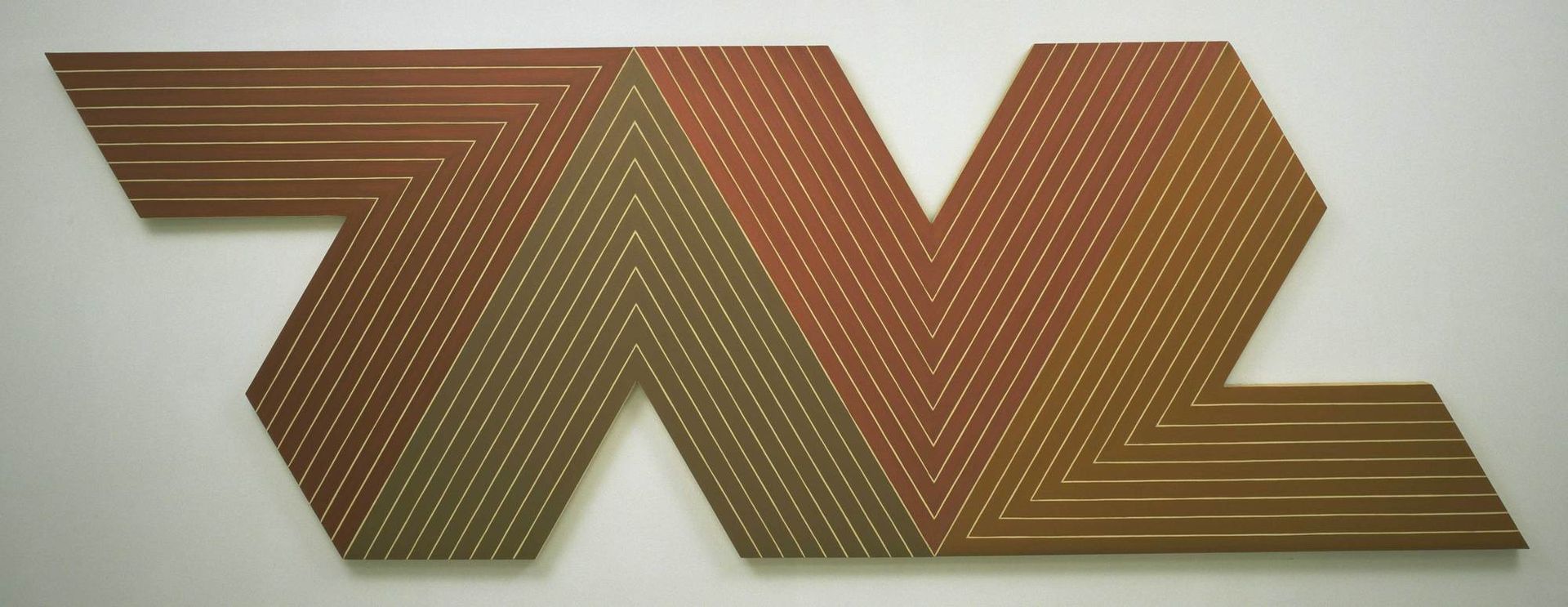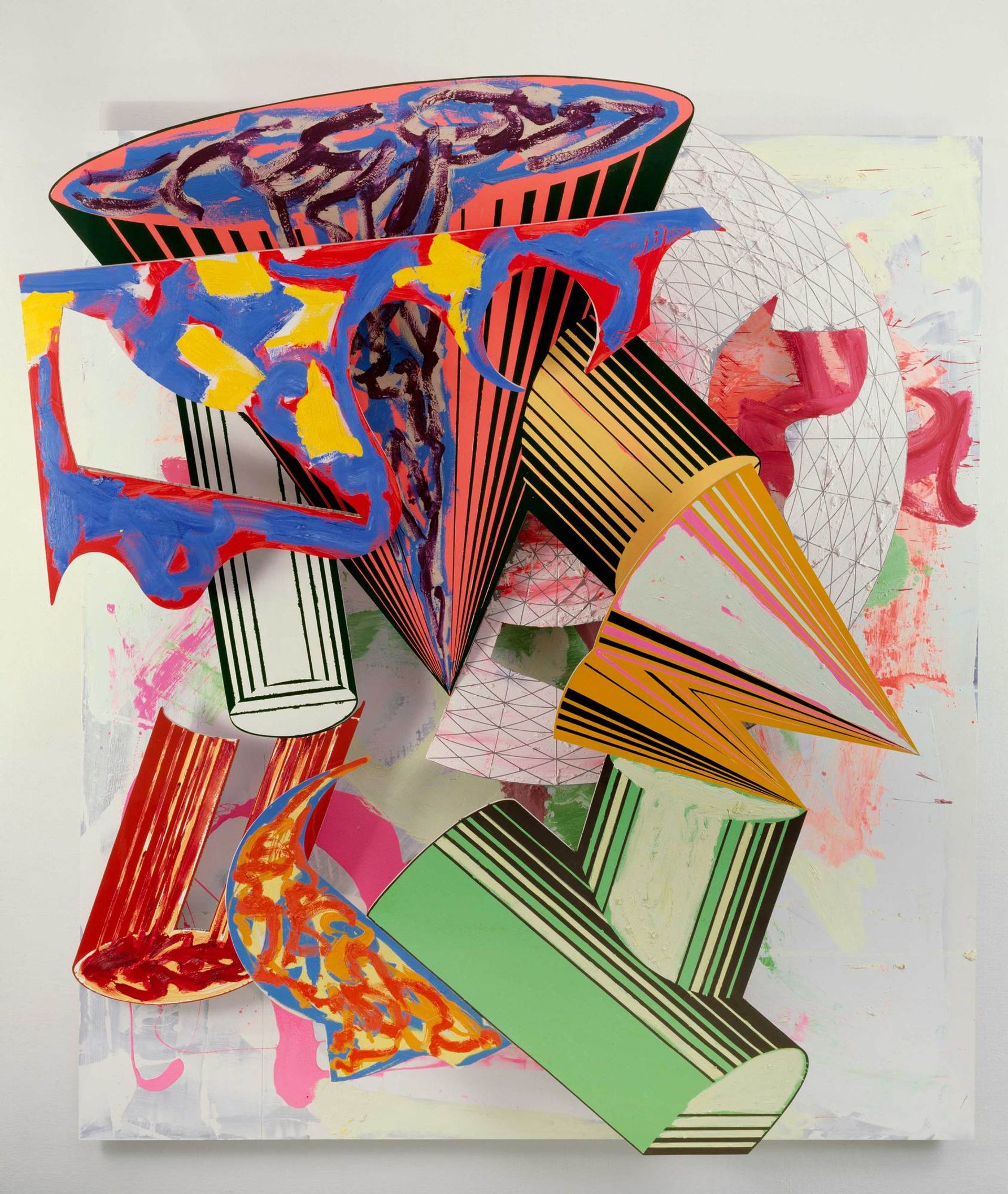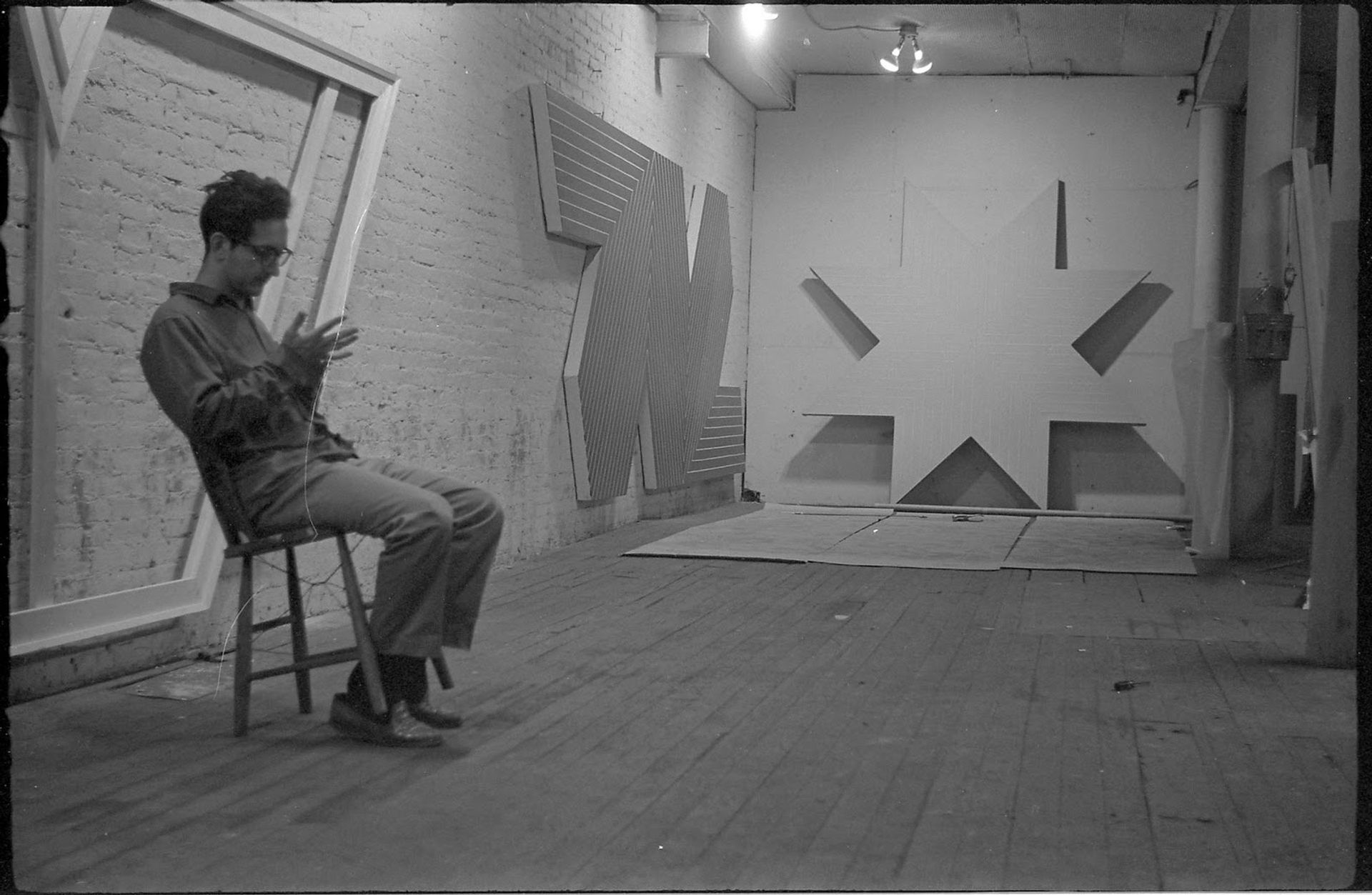One measure of an artist's worth is the writing he or she inspires. By that test, Frank Stella is no longer so worthy. Critics of his current retrospective at the Whitney Museum of American Art in New York have treated him as everyone else has since the close of his early period (1958-1966), with high esteem and little critical rigor. There is much cognitive dissonance. The reviews are full of gushing admiration for an artist who is rightly considered foundational for the history of post-war art, but there is barely any exegesis. In the New York Times, Roberta Smith wrote that “the totality of the show can make the mind reel with ideas, insights and arguments,” but what those ideas, insights and arguments were was left unaccounted. It seems there is nothing new left to say.
For this, Stella is to blame. For the past 40 years his art has put little pressure on critics, making it easy to pass over without commentary. This was not always the case. His best pictures, from the pre-Black Paintings (1958) until the Irregular Polygon series (1965-66) motivated fierce polemics. “Carl Andre and I were fighting over his soul,” the critic Michael Fried remembered of the 1960s, because with Stella, back then, everything was at stake. His stripe pictures—which include the Black Paintings (1959-60), the Aluminum series (1960) and Copper series (1960-61), the Notched V series (1964-65) and Running V series (1964-65), which are each represented in the exhibition—led either to a new Gilded Age of painting, as Fried demanded, or opened into the expanded field of Minimalism with Andre and Donald Judd.

The debate, though often technical (Fried especially was perhaps too fine a formalist, too minute in his descriptions), was at bottom a question of tradition versus apostasy. For Fried, writing in 1963, nothing less than “the entire dialectic of modernist painting from Manet to the present” was at play in Stella’s work. Fried believed in divine continuity. The pictures carried forward a great tradition with renewed religious zeal. To not see the work this way was to not see the work at all. In the epigraph to Art and Objecthood, Fried’s 1967 attack on Minimalism, he quoted the American Theologian Jonathan Edwards to equate the longevity of painting with sacred vision: “We every moment see the same proof of a God as we should have seen if we had seen Him create the world at first.”
For Judd, this was lunacy. Stella had cut all ties. He was no painter, but the inventor of the Minimalist totem. “I thought of Frank’s aluminum paintings as slabs, in a way,” he told the radio DJ Bruce Glaser in 1964. Stella’s works were “specific objects”, in Judd’s phrasing, and they insisted on new vocabulary. There was nothing divine here, nothing that could be explained with reference to continuity: “We recognize that the world is 90% chance and accident,” he told Glaser, speaking on behalf of his Minimalist contemporaries.
Even critics who reviled Stella elevated their rhetoric. In a 1964 New York Times review of Stella’s show at Leo Castelli gallery, Brian O’Doherty wrote that the paintings “announce that a new kind of human animal is around, a new response to living life—one that is anti-emotion, anti-human, anti-art (by trangressing its limits of expression or non-expression) and that is even anti-anti.”
In the heady 1960s, arguments over Stella’s work were about first principles, the foundations on which everything else is built. What do we value? Tradition or revolution? Continuity or “chance and accident”? Humanism or structuralism? Fundamental questions lead to fundamental claims and the best pictures at the Whitney—Black Paintings like Die Fahne Hoch! and the Marriage of Reason and Squalor (both 1959), or the Running V picture De la nada vida a la nada muerte (1965)—are built on a solid formal foundation. In these works, one stripe determines the rest. They are just “one thing after another,” as Judd one wrote. Here is Stella’s conviction pure and clean: the knowledge that one move can have enormous implications.

For Michael Auping, the Whitney show’s curator, little has changed, conceptually, between 1959 and today. Although a work like redjang (2009) may look little like a stripe picture, Auping writes in the exhibition catalogue that the painter’s later bombast is “fundamentally not that far from Stella’s earliest visions of abstract painting.” He wants to draw a straight line through the work with space as the common denominator. Already in the Black Paintings, Auping sees “the illusion of a gentle vibration, like the strings of an instrument that have been plucked.” The pictures for him are not as flat as they seem. It is a slow evolution, not a break, that leads to physically invasive work like redjang. “There is an illusionism that a lot of people don’t see in the Black Paintings,” Auping told me when I interviewed him in September. “You’ll see that accelerated.”
The point extends throughout the installation. Although it is roughly chronological, there are moments where radically different works stand together. We are meant to see correspondences between, for example, De la nada vida a la nada muerte and The Whiteness of the Whale (IRS-I, 2X) (1987) from the Moby Dick series (1986-97), which are hung across from one another in one gallery.
This is a tedious tinkering. Auping is a fine curator with impeccable taste and his loyalty to Stella is beyond doubt. But his narrative, in which one work justifies another in a long historical chain, is proof of how feverish arguments about tradition and revolution—about the revelation of God in painting, about the “new kind of animal” borne of Stella’s work—have cooled into simple explanation. Auing’s assertions cannot countenance histrionic work like Talladega (1980) from the Circuit series (1980-84), with its garish design. No justification will make this Rococo confection into a serious work of art. In a review of Stella’s 1987 Museum of Modern Art survey in New York, Arthur Danto wrote that three similar works were each “a furious razzle of dashing curves” which looked “as if they had been picked by Cyndi Lauper to knock your eyes out.”

Stella, at this point, could only inspire such ridiculous criticism. His art could no longer foster rigorous debate, let alone compel conviction. Talladega carries no principles. It makes no appeals. It is enough to write of it what Jason Farago in the Guardian recently wrote of another piece by Stella, that it is “a ghastly pileup of cast aluminum painted with wavy, tie-dye patterns”.
The artist got to Talladega because pictures like Die Fahne Hoch! are at the end of painting, both formally and conceptually. From there, unless Stella was to repeat himself, there was nothing left to do but begin putting back in everything he had taken out. The Minimal solution was unsustainable. Between 1959 and 1965, Stella drove the stripe paintings through every conceivable variation. Shape became a dimension with the Aluminum series after Stella’s friend, the painter Walter Darby Bannard, suggested he cut away the corners of his pictures. The V series put colour in focus, as with a work like Empress of India (1965). Movement became a factor with the Running V pictures. But then Stella ran out of options. Philip Leider, the founding editor of Artforum and one of Stella's most vocal supporters, saw the problem clearly in 1978: “It is a matter of having taken things as far as possible, only to find oneself trapped in an outpost of art, with work threatening to come to a standstill, thin and uncreative.”

Stella avoided the standstill with his Irregular Polygon pictures of 1965-66 but at tremendous cost. These paintings broke with his earlier work. Gone was simplicity, replaced by boisterous shape and ostentatious colour. First principles were jettisoned as was “one thing after another”. It is impossible, from the orange parallelogram of Effingham II (1966), to imagine the necessity of the rest of the work. The Irregular Polygons were no longer foundational. They added to the history of painting, but not at its bedrock. The pictures were creative, yes, but frivolously so. The work lowered the stakes. Hilton Kramer summarised it best in his 1966 review of these paintings: “It leaves me with too great a sense of all that has been lost from the universe of artistic discourse.”
Stella has made some agreeable pictures since then and some of them are included in the show. Gur I (1968) from the Protractor series (1967-71) is a handsome work, largely because the black outlines of certain shapes hold together the otherwise flashy colour. Gobba, zoppa e collotorto (1985) from the Cones and Pillars series (1984-87) is similarly kept in check by its cleaner lines. The Whiteness of the Whale (IRS-I, 2X) in particular has some raw, if uncoordinated, power. But it too is appetizing only because it has large, flat areas of unmediated colour.
At bottom, these works are undemanding. Agreeable, handsome, appetizing: these are gentle terms devoid of passion because the art inspires little. Still, it is not that Stella lost ambition. He was brave to leave behind the stripe pictures and risk his career, critically and financially, on radically new work. Nor did his imagination fail. Only an inventive, if eccentric, mind can picture work like The Whiteness of the Whale (IRS-I, 2X). The problem, instead, is structural. The bones of his work for the past 40 years have not been able to support any polemics.

Stella, to his credit, refuses to see so. He works with the wilful myopia any self-respecting artist must cultivate. “And like all artists, I believe what I'm doing now is the best,” he told the Telegraph in 2011. He does not make art for us anymore, but for himself and for the future. Jerry Saltz was right to say in his New York magazine review that this work is directed towards “the superorganism of art history.” Perhaps taste will expand in years to come and Stella’s later art will become more palatable. Yet that would be a small success. Critics to come may find pleasure in this work, but it is difficult to imagine them feeling that the art is necessary. That is true only of Stella before 1966. Today we look to that period simply for the preservation of whatever ideals we once fought over. It is those ideals we must find a way to fight over again.
Frank Stella, Whitney Museum of American Art, New York, until 7 February 2016

